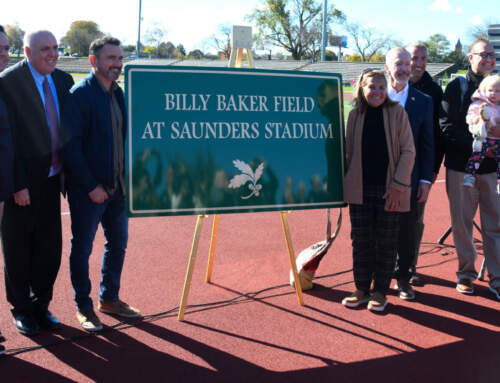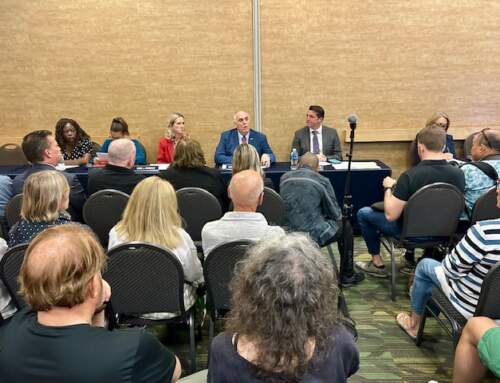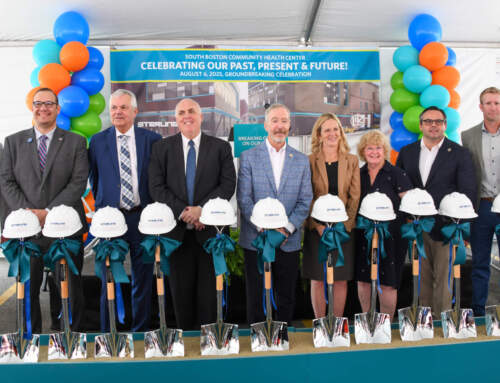In this 100th year since we entered World War I on April 6, 1917, South Boston Online is publishing a series of articles about that conflict – “The War to End All Wars”. Our aim is twofold: First, to assess the impact of that war on local history, and second, to gain momentum and support for a World War I Memorial on South Boston’s soil.
by Rick Winterson and Mary Ryan
Mary Ryan works in education administration for UMass Boston at 150 Mt. Vernon Street, in the Corcoran-Jennison Office Building. She’s a born-and-brought-up South Bostonian, who lives in Milton now. She went to school for ten years at Gate of Heaven, graduated from South Boston High School, attended UMass Boston as an undergraduate, and received her MA from Tufts. She enjoys her varied and successful career, but nowadays, Mary has a Mission.
Mary’s Mission connects with the upcoming 100th Anniversary of World War I, which was once referred to as “The War to End All Wars”, when it ended on Armistice Day (now called Veterans Day in the U.S.). Then President Wilson had asked Congress for a Declaration of War on April 2, 1917; that Declaration was granted by Congress on April 6, 1917. Those dates in 2017 – a century later – are just 12 weeks away.
You see, Mary is the great-niece of a South Boston veteran named Joseph Edward Kaes. He was born on Christmas Day in 1896 to Jacob and Katherine Kaes. They immigrated to America from the Alsace region of Europe, which is now part of France but mostly belonged to Germany before World War I. Their son Joseph was the youngest of their 11 surviving children. His father Jacob worked as a rope maker in the Navy Yard; you know what his mother did. Young Joseph became a hero.
In 1915, after working in a candy factory for a few years, young Joseph enlisted in the Massachusetts National Guard – Company A, Ninth Infantry – and served on the Mexican border. He went overseas in September of 1917 with the rank of Private First Class, as a member of the 101st Infantry, the Yankee Division in the American Expeditionary Forces.
Pvt. Joseph Case was severely wounded in action on October 7, 1918, during the Meuse-Argonne Campaign near Verdun, France. Specifically, he took a round to his neck, in the cervical area of his spine. He died of his wounds in a Base Hospital over a month later on November 21 – ten days after World War I ended.
There is still a lingering sadness in Kaes’s story, even after a century has passed. Pvt. Kaes’s final days must have been filled with pain, an inevitable decline, and (perhaps) extensive paralysis. And they say, “You can’t go home again”, yet Joseph Kaes fought in the Meuse-Argonne Offensive, which was near the Alsace region, his parents’ original homeland. Nearly 27,000 Americans died at Meuse-Argonne; Joseph himself never returned home among the living.
The Kaes family lost both another son, Frederick, and a son-in-law to the flu epidemic a month before Joseph was wounded and died. And then, they had to resolve the difficult question about bringing Joseph’s remains back here. That wasn’t customary in those days because transportation was so limited – air transport simply did not exist in 1918. Families of military men who died overseas often decided not to relive the loss they had suffered, since the remains might not arrive back for months, or sometimes years. After much reflection and disagreement, Joseph’s mother and father decided to bring his remains home. He was interred with full military honors in Old Calgary Cemetery on January 12, 1921.
These stories and the people involved must not be forgotten. South Boston should begin planning for a formal World War I Memorial of some kind during this centennial year of World War I, as we have honored our veterans of other wars. There is a kind of memorial display inside the High School, from which we could begin to start.
(South Boston Online thanks Mary Ryan for her invaluable contributions to this article, as well as to South Boston’s World War I history and stories.)






